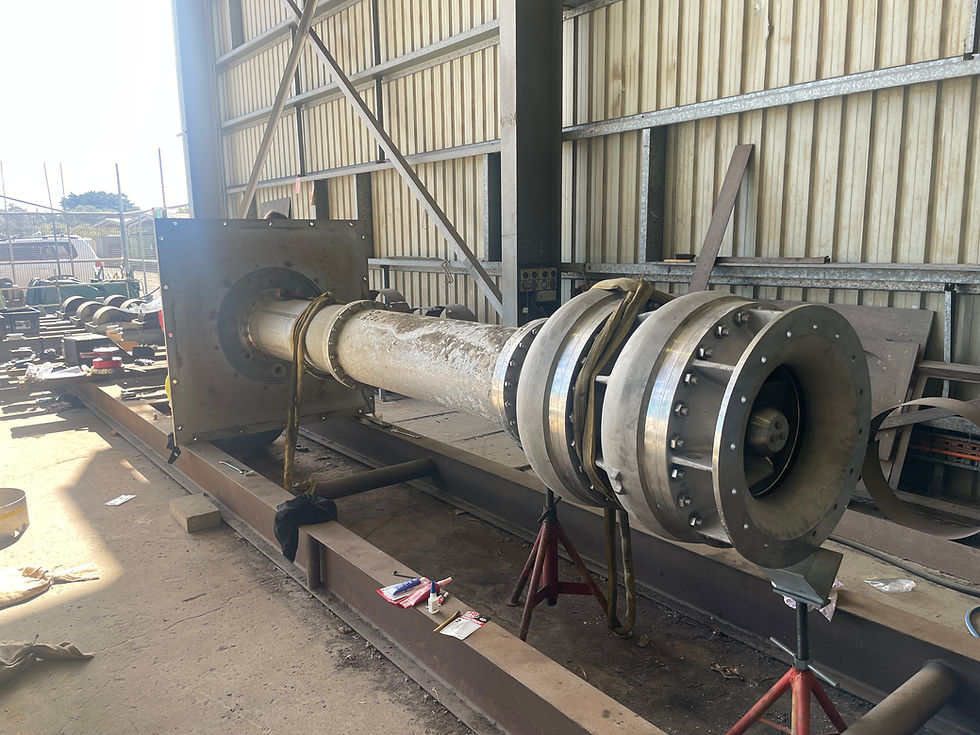IS YOUR PUMP TRYING TO TELL YOU SOMETHING? HERE'S HOW TO KNOW IT'S TIME FOR A REPLACEMENT
- Specialised Flow Solutions

- Jun 17
- 4 min read
Updated: Aug 1
At Specialised Flow Solutions, we’ve recently helped several clients out of some seriously tight spots.
In each case, the story was much the same: a critical pump had gone down unexpectedly, there were no spares on site, and a replacement was over 12 weeks away. That’s 12 weeks of potential lost production, mounting pressure on maintenance teams, and a lot of stress nobody needs.
Thankfully, in one case we were able to provide fast-turnaround repairs to get the pump running again—just in time. In another, we leveraged our extensive supplier network and, with some out-of-the-box thinking, sourced a suitable replacement and had it airfreighted from Europe. But here’s the thing: these last-minute scrambles, while avoidable, are all too common. And while we’ll always be here to help when the pressure’s on, the best outcome is one where the emergency never happens in the first place.
With that in mind, we wanted to share some of the most common signs that your pump is approaching the end of its useful life. Spotting these early can save your plant a world of headaches and keep your operations humming.
1. Your Pump Isn’t Pulling Its Weight Anymore
Let’s say your system isn’t hitting its flow target like it used to. You’re not seeing leaks, and nothing’s obviously wrong—but everything feels just a bit sluggish.
This is often the first sign of internal wear. Impellers wear down, tolerances open up, and hydraulic efficiency starts to drop. A quick repair might buy you some time, but if performance keeps slipping, it’s probably time to start planning a replacement.
Pay attention to:
Lower flow rates
Difficulty maintaining pressure
Increased motor amps or energy bills
If your pump is working harder to do the same job—or can’t do it at all—that’s a clear signal something needs to change.
2. Your Pump Sounds... Off
Industrial pumps aren’t supposed to be silent, but they should have a consistent, familiar sound. When that changes, it’s worth investigating.
Screeching, grinding, rattling—these are cries for help.
You might chalk up that strange rattle to a loose coupling, or could it be that the internal clearances have shifted, and the impeller is making contact. If it’s the latter, the pump is days away from catastrophic failure.
Common noises and what they mean:
Grinding = bearing failure
Rattling = loose internals or broken parts
Screeching = seal or motor issues
If your pump starts sounding like a bucket of bolts, don’t ignore it. That’s your early warning system doing its job.
3. You’ve Rebuilt It… Again… and Again
Let’s be honest—sometimes we all fall into the trap of “just fixing it one more time.”
We get it. Budgets are tight, spares might be limited, and maintenance crews are stretched thin. But if you’re spending more time fixing a pump than it’s actually running, you’re already paying for a replacement—you’re just paying for it in parts, labour, and downtime.
Some signs your pump might be on borrowed time:
Regular seal or bearing failures
Constant alignment issues
Repair costs adding up over months
At some point, it makes more financial sense to replace the pump outright—especially if the current unit is costing more than it’s contributing.
4. It Looks as Tired as It Runs
We had a site recently where the pump was weeping from three different places—and no one had really noticed. The paint was long gone, bolts were rusted, and the casing had visible corrosion. It had become part of the background, quietly deteriorating.
Take a good look at your pump:
Any signs of rust or pitting?
Are there leaks that keep coming back?
Cracks or damage on the volute or baseplate?
Sometimes, the visible signs tell you everything you need to know. Pumps live hard lives—and when they start showing it, you need to act before the damage spreads to other parts of the system.
5. It’s Just… Old
Age alone isn’t a death sentence for a pump—but it definitely raises the stakes.
Many of the older pumps we come across were built like tanks, and in fairness, they’ve earned their keep. But with time comes wear, obsolescence, and a growing list of issues:
Spare parts no longer available
Performance can’t match modern process needs
Efficiency lags behind newer models
We’ve seen older units keep going with a bit of care—but when something does go wrong, the fix isn’t always simple or fast. If your pump is 15+ years old and starting to show signs of wear, it’s time to start planning.
Final Thoughts: Don't Wait for a Breakdown
If we could leave you with just one takeaway: don’t wait until your pump fails to act.
Even if things are running “okay” now, a proactive approach—based on what your pump is telling you—can mean the difference between an easy swap and an emergency shutdown.
At Specialised Flow Solutions, we’re here to help you make smart, forward-thinking decisions about your equipment. Whether you need a full pump upgrade, advice on lifecycle planning, or a stop-gap repair to get you through, we’re here to help.
Need Help Evaluating if you Need a Pump Replacement?
Let’s talk. We can help assess your existing pump’s condition, recommend replacements, or help you source a better solution—before you’re in crisis mode. Because when your equipment works, everything else does too.




Comments